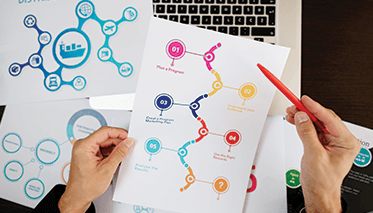The SaaS market is estimated to be worth $171.9 billion, making it one of the fastest-growing business models globally. Today, organizations of different types and sizes are embracing the model across various avenues of their business, to drive exceptional results. Software development is one avenue which is benefitting immensely from the SaaS model, allowing organizations to build innovative, scalable, and custom products. Read on to learn about the different ways in which you can improve and strengthen your SaaS development lifecycle for accelerated time-to-delivery and unmatched scalability.
Strengthening Your SaaS Development Lifecycle
Using SaaS for software development opens doors to several benefits, including better resource availability, improved communication, and streamlined project management. By giving teams more flexibility in including features they want, improving the build as often as required, and offering more control over quality and compliance, SaaS makes it easier to amplify security and ensure faster releases. At the same time, it enables continuous improvements to be made to the functionality, scalability, and availability of features and capabilities, which is why it is becoming a top choice for development organizations of all sizes.
Yet, when it comes to getting the most out of SaaS, there are several challenges that teams face across the SaaS development lifecycle: from envisioning the process all the way through to operations, it’s important to address roadblocks in the IT team’s approach to the development lifecycle. Here’s how you can strengthen the SaaS development lifecycle:
1. Identify Weak Spots in the Planning Stage
SaaS development requires a thorough and rigorous approach towards identifying weak spots early in the lifecycle. From third-party integration to cloud provider assessment, platform capability evaluation to operational enablement perspective – being aware of the hurdles that may come in the way of successful development from the very beginning can aid in building a robust plan in place to overcome them in time.
2. Make a Game Plan for Development
Since one of the most critical aspects of any product today is scalability, it is essential to define your vision for the product and make a strong game plan for development. In the forecasting phase itself, make sure to assess the scale of the project from a business perspective to avoid possible failure. Involve all stakeholders, including managers and architects to ensure the architecture and functionality of the platform correspond to the specifics of the project and contribute to the realization of its goals.
3. Nail Down Your Methodology
Like traditional software development, there are several methodologies you can choose from, to build your SaaS software product: from agile and scrum to iterative and rapid. Select one that best fits the needs of your organization, is apt for your team, and allows you to build scalable, secure, and highly flexible products.
4. Understand the Architecture Requirements
Having a clear and deep understanding of the architecture requirements of your product is critical to ensuring the foundation of your application is strong. Make sure you’re clear about design specifications, so you can translate them into accurate code artifacts and back them up with supporting documentation. Since the architecture and detailed design may change based on the introduction of new functionality and refinement of existing functional specifications, opting for an iterative, multi-tenant approach is a great way to introduce new changes, apply updates, and carry out maintenance without disruption.
5. Prepare for Upgrades
Software products today need to be constantly updated and upgraded according to evolving trends, regulations, and customer demands. Make sure to build upgrades into your development architecture, so user experience is not disrupted when you introduce new changes. Constantly monitor the performance and functionality of the product, seek user feedback to make additional improvements, and carry out regular fix bugs to ensure long-term success.
6. Expect the Unexpected with Deployment
While deploying your SaaS-built application, there are chances that you’ll face issues related to availability. To ensure your deployment happens without interruption and that users face no downtime, especially when a new version or feature is released, it is a good idea to opt for services that are fully responsive and have a robust backup strategy in place, in case an outage happens, so user experience is not hindered.
Take Your SaaS Software Development to the Next Level
As SaaS becomes synonymous with business success, the model is being embraced across different aspects of the business. SaaS-based software development, although extremely beneficial, requires a different approach than traditional software development. Unlike in a traditional software development setting where more emphasis is laid on the functional aspects of development, in the SaaS development cycle, the cloud technologies and methodologies you choose and the cloud provider you opt for become critical success factors.
Working with a qualified technology platform can help in creating a functional and feature-rich product using SaaS development best practices. A competent partner brings a global delivery network to the table, along with the promise of zero-downtime deployment and flexible pricing, allowing you to achieve the goals of your business and the needs of your customers in a quick and efficient manner.
Discover the power of SaaS with Synoptek’s application support and maintenance services. Optimize your SaaS development for business success today.





